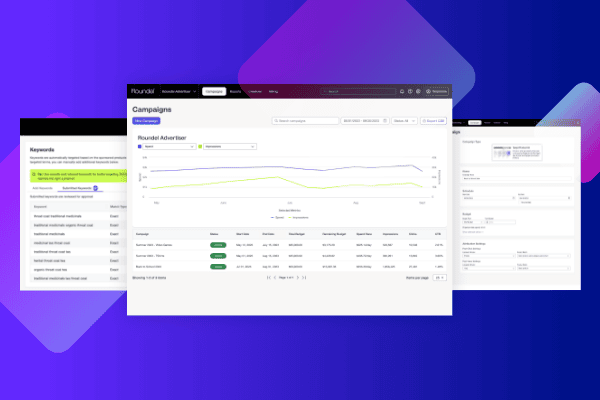Summary
A recent Criteo webinar and Skai 2024 State of Retail Media report highlight the essential capabilities of a next-gen retail media advertising platform. These platforms must offer advanced tools for campaign management, targeting, analytics, and automation to handle the growing investments and scrutiny in retail media. Choosing a platform with a robust feature set, seamless integration, and extensive placement capabilities ensures effective and efficient marketing strategies.
As the Criteo webinar, The Power of Product-First Retail Media Strategies, made clear, retail media has firmly established itself as a digital marketing giant. It is known as a top-performing channel, with significant growth and investment driving its transformation.
However, as more investment flows into retail media, the stakes will get higher. When retail media was a smaller component of the digital marketing mix, there was less scrutiny and pressure to justify every dollar spent. As investments in retail media continue to surge, the pressure to deliver measurable outcomes increases. This shift creates new requirements for platforms to provide robust features and capabilities.
The ten fundamental requirements for a retail media platform
One crucial takeaway from the Criteo webinar was the need for advanced tools to manage retail media campaigns effectively. In Skai and the Path to Purchase Institute’s 2024 State of Retail Media report, many of the factors that marketers identified as investment accelerators are facilitated by the capabilities of advanced retail media platforms.
As highlighted by Criteo’s webinar, ten fundamental requirements for a successful retail media platform are:
- Campaign creation and management. Tools for setting up campaigns across various channels, ensuring they align with marketing goals.
- Targeting and segmentation. Advanced options to reach specific audiences based on demographics, behavior, and other parameters.
- Dashboard and interface. An intuitive and comprehensive dashboard to manage and oversee campaigns efficiently.
- Advanced analytics and reporting. Real-time analytics and detailed reporting to track campaign performance and measure ROI.
- Attribution and measurement. Robust attribution models to understand the impact of campaigns across different touchpoints.
- Compliance and privacy. Ensuring compliance with data privacy regulations and providing transparency in data usage.
- Inventory management. Features to manage product inventory effectively, ensuring ads are shown for available products.
- Creative optimization. Tools to optimize ad creatives for better performance, making necessary adjustments based on real-time data.
- Automation. Automated bidding and campaign management to streamline processes and improve efficiency.
- Personalization. AI-driven personalized recommendations to enhance customer engagement and conversion rates.
The capabilities of next-generation retail media platforms
Going beyond the fundamentals, the next generation of retail media platforms must also include:
Integration and Automation
Omnichannel integration. Seamless integration across various retail channels – including in-store, online, and mobile – is essential for a unified marketing strategy. This allows for consistent messaging and better coordination across all touchpoints.
Automated bidding and optimization. AI-driven automated bidding strategies maximize ad spend efficiency, ensuring optimal resource allocation. These strategies continuously adjust bids based on real-time data to achieve the best possible results.
Automated actions. Rule-based automation updates creative, budgets, bids, and status based on predefined conditions like ROI and trends. This feature reduces manual intervention and increases efficiency.
Personalization and Targeting
Personalized recommendations. Leveraging AI to deliver personalized product recommendations enhances customer engagement and conversion rates. This capability uses customer data to suggest products that match individual preferences and behavior.
Dynamic creative optimization (DCO). Tools to dynamically adjust ad creatives based on real-time performance data improve ad relevance and effectiveness. These adjustments help maintain high engagement rates and better ROI.
Advanced targeting options. Enhanced targeting capabilities using first-party data, transactional signals, and lookalike audiences allow for precise audience segmentation and targeting, ensuring that ads reach the most relevant consumers.
Tracking and Analysis
Cross-device and cross-channel tracking. Comprehensive tracking across devices and channels provides a holistic view of the customer journey, ensuring consistency and cohesion in marketing efforts. This capability helps understand how users interact with ads across different platforms.
Advanced analytics and reporting. Real-time analytics and detailed reporting track campaign performance and measure ROI. These insights are crucial for making data-driven decisions and optimizing future campaigns.
Creative hub. A centralized location to monitor and compare performance insights for creative assets across multiple channels, facilitating better creative management. This helps identify which creatives perform best and why.
Budget management tools. Automated budget pacing to find the optimal balance between ROI and spending, ensuring efficient budget utilization. These tools help in adjusting budgets based on performance metrics and market conditions.
Best practices for evaluating retail media platforms
When choosing a retail media platform, it is essential to consider several best practices to ensure the tool aligns with your business goals and marketing strategies:
Comprehensive Feature Set
A robust retail media platform should offer comprehensive features that cater to the various stages of campaign creation, management, monitoring, and optimization. Look for advanced targeting and segmentation tools, real-time analytics, and automated bidding. These capabilities will help you manage campaigns more effectively and achieve better results. Platforms known for their extensive omnichannel support exemplify the kind of comprehensive features that drive success across multiple advertising channels.
Flexibility and Integration
It is crucial to integrate seamlessly with other tools and systems in your marketing ecosystem. A flexible platform that supports integration across various channels — in-store, online, and mobile — will enable consistent messaging and better coordination. Additionally, automation features that adjust bids, budgets, and creatives based on real-time data are essential for optimizing efficiency and performance. Look for a platform that offers these integrated and automated solutions, ensuring that all aspects of your marketing strategy work cohesively together.
Placement and Scope
Evaluate the platform’s scope and placement capabilities. Consider where your ads will run and how effectively the platform can reach your target audience. For example, Criteo’s platform focuses on open web advertising, leveraging commerce data signals to reach a broad audience. Meanwhile, Skai’s platform provides comprehensive support for retail media networks (RMNs), RMN DSPs, and omnichannel advertising across walled-garden media, including search and social. Assessing these placement capabilities will help you determine which platform best meets your visibility and audience reach needs.
Final Thoughts
By following these best practices, marketers can ensure they choose a platform that not only meets their current needs but is also equipped to handle future challenges. Platforms like Criteo and Skai offer distinct but complementary strengths, and understanding all of the capabilities and solutions available can help you make an informed decision that drives your retail media success.







